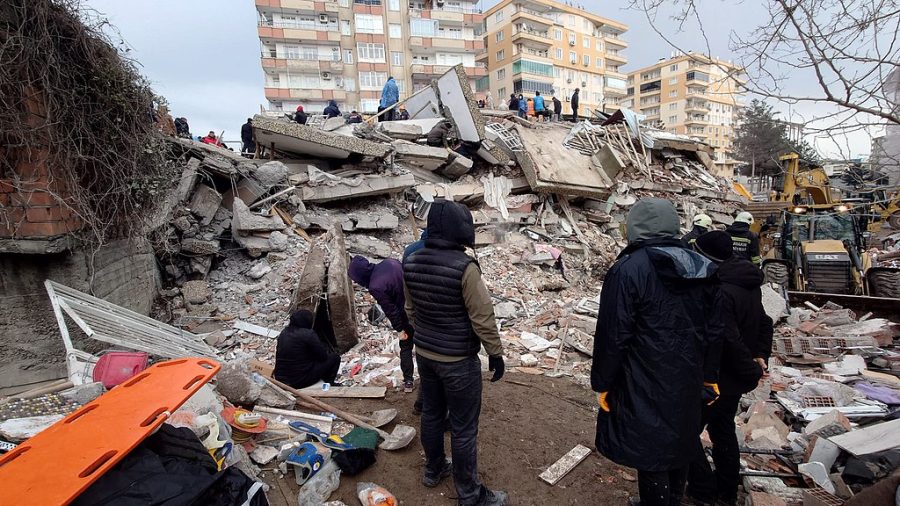Earthquakes underscore impact of refugee crisis
Destruction caused by the quakes in Turkey and Syria raises concern
A 7.8-magnitude earthquake causes massive damage in Turkey.
March 23, 2023
Imagine your entire livelihood being destroyed in a matter of minutes. Your neighborhood reduced to crumbled concrete, your city leveled and your community lost. That is the level of destruction that people living along the southern border of Turkey and northern border of Syria are facing today because of a 7.8 quake that hit Feb. 6. It wasn’t just a single earthquake that shook these areas, but multiple aftershocks such as the one on Feb. 20, 2023 — only two weeks after much of the region was leveled. Earthquakes in Turkey and Syria are nothing new, per se, but they have become an increasing concern for residents, especially with subpar infrastructure and socioeconomic instability due to the refugee crisis.
Turkey and Syria both lie in the North Anatolian Fault zone, which is a place where the Eurasian, Anatolian, African and Arabian plates all meet. Additionally, the magnitude of an earthquake correlates with the size of the area’s fault line, and the Anatolian Fault line is more than 900 miles long. Because of its location, Turkey is one of the most seismically active regions in the world, according to the American Museum of Natural History.
Turkey has withstood more than 20 earthquakes that were logged as being a seven-magnitude or greater in the past 100 years, but the one on Feb. 6 was the most powerful since 1939. As such, the Middle East is no stranger to earthquakes, but in recent years with political unrest, little attention has been paid to the architectural infrastructure of the region. The refugee crisis plaguing Turkey and other Middle Eastern nations is restricting the ability of the government to reinforce proper building codes and funding, which will lead to more deaths of their own people in the future.
Syria, which was thrown into a civil war in 2012, has been suffering air strikes and disruptions in normal life for more than 10 years. Because the civil war has been raging on for so long, many Syrian people have been displaced and are living as refugees in Turkey. With little resources for housing, they are living in places not up to building standards, which made them more likely to be destroyed in the earthquake.
The destruction caused by the quakes raises questions and concerns about how a nation should handle infrastructural problems in the midst of socioeconomic vulnerability. Turkey should not turn away these refugees from entrance to the country, but more suitable refugee camps or permanent housing areas should be built and kept up to the standard of building that have withstood earthquakes for centuries.
Many buildings near the epicenter of the first earthquake were subject to pancake collapses, which revealed issues with structural integrity and being built up to seismic codes. Pancake collapses are more deadly because the rubble has fewer air pockets due to the compressive nature of the concrete. Turkey has seismic codes implemented by the government that follow international standards, but in real-time construction, they are being forgone.
Additionally, some sources cite shortcuts taken by contractors in the production of public service buildings like hospitals and schools, which are necessary for communities and also house many people at once. Such shortcuts are obviously deadly and should be avoided at all costs, even if it means dedicating more money to reinforcing buildings, a costly job.
More than 40,000 people in the area are dead as a result of these earthquakes, but these deaths could have been curbed by buildings that were up to code. According to the United Nations site PreventionWeb, new codes were even put in place in January 2019. These codes were meant to help buildings withstand earthquakes by following special rules for their materials, heights and designs. However, these nations are clearly struggling to maintain safe spaces for refugees and their own people, which will cause waves of deaths in the future that could have been prevented.














